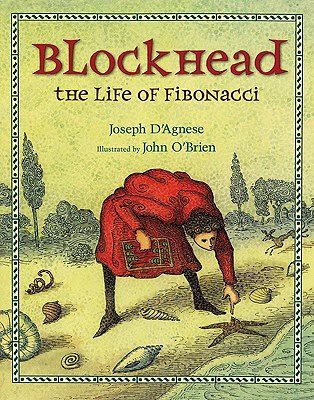Part 1 (Basic Overview: Classical Education and Mathematics)
Part 2 (Day 1 Notes: Cosmos!)
Fibonacci
In the West, the Fibonacci sequence first appears in the book Liber Abaci (1202) by Leonardo of Pisa, known as Fibonacci. Fibonacci considers the growth of an idealized (biologically unrealistic) rabbit population, assuming that:
A newly born pair of rabbits, one male, one female, are put in a field; rabbits are able to mate at the age of one month so that at the end of its second month a female can produce another pair of rabbits; rabbits never die and a mating pair always produces one new pair (one male, one female) every month from the second month on. How many pairs will there be in one year?
(The photo above is an example of how we went about looking at the problem.)
At the end of the first month, they mate, but there is still only 1 pair.
At the end of the second month the female produces a new pair, so now there are 2 pairs of rabbits in the field.
At the end of the third month, the original female produces a second pair, making 3 pairs in all in the field.
At the end of the fourth month, the original female has produced yet another new pair, the female born two months ago produces her first pair also, making 5 pairs.
At the end of the nth month, the number of pairs of rabbits is equal to the number of new pairs (which is the number of pairs in month n − 2) plus the number of pairs alive last month (n − 1). This is the nth Fibonacci number.
The Fibonacci sequence is named after Leonardo Fibonacci. His 1202 book Liber Abaci introduced the sequence to Western European mathematics. It is a number pattern found in nature—such as in branching in trees, the arrangement of leaves on a stem, the fruit sprouts of a pineapple, the flowering of artichoke, an uncurling fern and the arrangement of a pine cone—even galaxies and the curing of waves. It also has many practical applications—the Fibonacci sequence is also the foundation of how apparel is sized (called "grading"), and it’s used in knitting. There is so much more to say about it, but for now I’ll just tell you that the sequence starts with the numbers 0 and 1. Then every subsequent number is the sum of the previous two numbers. So you have 0, 1, 1, 2, 3, 5, 8, 13, 21, 34, 55, and so on.
Blockhead: The Life of Fibonacci is a beautiful (and entertaining) picture book introduction to the life of Fibonacci for elementary students.“It is a blueprint that describes how living things such as flowers grow in an orderly, harmonious way. The numbers even pop up in works of human imagination—buildings, music, art, and poetry.” Blockhead: The Life of Fibonacci
The Fibonacci sequence is related to the “golden ratio,” or phi. Take any two neighboring Fibonacci numbers. Divide the larger by the smaller and you get roughly 1.618. (Phi is an irrational number, which means that it is a non-terminating, non-repeating decimal, 1.6180339887….) (Phi shows up in art and architecture, body proportions, the heart, DNA, spiral in snail shells, etc…)



1 comment:
Wow! If only I was introduced to math in this way! You gave me a great idea for my son and I. blessings!
Post a Comment